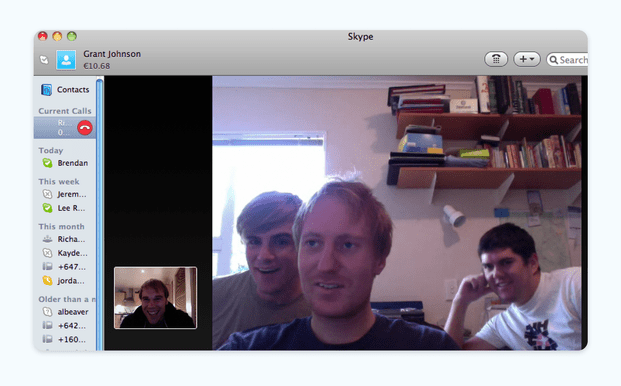We’re in uncertain and strange times as the world community changes rapidly around us with people getting sick, borders closing, fights over loo paper and shelves emptying of basic essentials.
It’s impossible to predict where things will go and from our HQ in small town New Zealand we’ve been a little removed from the pandemic concerns. I must confess we did chuckle at the sight of people with watercooler bottle head shields and cats with facemasks (poor cat!) but we’re seeing the reality of the situation unfold now and are making plans for how we can use our skills and tools to best support our clients, partners and the wider community at this time.
Outside of helping people build beautifully simple websites, we’ve gained a huge amount of experience in remote working.
There is a likelihood that the requirements of isolation could require widespread remote working so I’ve prepared this little blog to share what we’ve learnt about how to do this effectively.
As a bootstrapped startup, a nice office, any office, was a luxury we avoided for the first seven years of Rocketspark’s life as we could use those funds much better to create our website builder platform. I started working on Rocketspark remotely from Valencia, Spain while my co-founders were based at their shared flat in Hamilton NZ. Today I still work remotely 3 days a week and one of our senior developers, Harvey, has been 100% remote since joining us in 2011 so we’ve got some real experience to share.
It starts with trust
As a leader, a starting point to running a remote business successfully was to put aside any concern that the team would be messing around if they were not in an office closely monitored. I found if you had any distrust about what people might get up to while operating remotely it would become an unnecessary distraction. We’ve been fortunate to have a great team at Rocketspark who take ownership of their respective areas of responsibility and we trust them to do a good job. For the most part the team have respected the freedom and flexibility we provide and it’s generally easy to see if someone is regularly slacking around.
Hiring self-motivated people is important too and often the level of their outside interests and results achieved in past roles can help you to recognise the type of people you can trust and empower to do a great job unsupervised minute by minute.
Have a clear plan
Having a clear plan of action for the various areas being worked on and using the right tools to manage the plan is really important. All of our teams use project / task management software which contains the tasks they are working on regardless of whether they are developers, marketers, customer success or finance and admin.
We utilise short daily meetings and weekly meetings to continuously review the plan and update each other on progress. These meetings aren’t used as a stick to beat each other about non-performance but help us focus on the right tasks and work collaboratively to solve any bottlenecks. We can all have off days but extended non-performance is clear to see with this set up.
Tools:
- Having a good project / task management tool is essential. Asana is our core project management tool which holds the team’s to-dos — Asana have a free plan that suits most businesses. Personally I preferred our previous tool Basecamp which was simpler and generated less inbox clutter as I tend to manage my to-do’s out of my inbox but Asana has great connections to a variety of tools we use.
- Our developers use Jira to manage their detailed tasks.
Write down policies and procedures
One factor for me leaving corporate life to start a business was the frustration at policies and procedures slowing things down. However, as we’ve grown it’s become all the more apparent that writing down policies and procedures is super essential for the smooth operation of Rocketspark. As new team members join we use this as an opportunity to highlight and capture gaps in the documented processes. We may not always close that gap straight away but by capturing the to-do in our project management software it does ensure that the most important updates are implemented.
Tools:
- Google Docs is a great collaborative tool for writing and sharing policy docs. As we’ve grown though some of the docs have become too large so we’ve had to split them into separate manuals and we’ve reached a point of needing to get a solution more suited to the tasks.
Getting together
Forced isolation is not going to help this one too much but getting together in person from time to time was still important. For some of the team it was not possible to get together regularly for social and business interactions but most weeks we’ll have game time when the majority of the team will play an online game together. In our online team meetings we’ll often have a bit of a laugh and chat about some topic of the day which is a nice way to have fun together and create community.
Tools:
“Can you hear me, I can’t see you, can you see me?”. Such a common occurrence at digital meetings over the years with the various communication tools we’ve tried.
- Currently our preferred communication tool for remote meetings is Google Meet, which is a video conferencing app. You can start a meeting at https://meet.google.com, it’s simple and it works.
- Slack is our core communication tool for chat messaging amongst the teams. The key benefit of Slack is you can set up various channels so that messages can just be communicated to the right groups rather than doing all points bulletins that drive everyone nuts. We have a watercooler channel too for sharing the memes and funny things our cats, kids or colleagues have done. You need to be disciplined about updating your status when on breaks, in meetings or gone for the day which can be easily managed within Slack.
Managing customer support at scale
Being a digital business our customer support has always been by email and phone. We learnt early on that we needed a support ticketing system to provide 5-star customer support. In the very early days we used a shared inbox and the rule was that any email marked as unread needed to be responded to but this approach led to us dropping the ball on replies quite regularly.
Using a support ticketing system the customer requests remain open until they are responded to.
Using a ticketing system also enables features such as:
- Prioritising specific types of support requests
- Measuring your response times and other key numbers to ensure your service quality remains high
- Monitoring trends on particular issues
- Managing queues and automated support help
- Measuring customer satisfaction with the support you provide
Our phone system is integrated into our support ticketing system so that when a phone call is received a customer support ticket is automatically created which enables efficiency of call handling.
The other key to managing remote customer support at scale is to have a great online help centre with support guides. We invest a lot of time in writing and refining support guides so that clients and partners can self-help which most would prefer to do rather than needing help from us. We noticed massive gains in our customer support efficiency when we increased the volume of support guides we had. We did find that the support requests that did arrive were trickier cases as the easy cases were resolved by the client using our help guides without needing to make contact.
Tools:
ZenDesk is our support ticketing system. It is quite expensive and there are cheaper options that do comparable things. We chose ZenDesk due to the variety of other systems we wanted to connect our support system with, such as feedback gathering tools like Productboard. We use ZenDesk Talk as our phone system which means that wherever the team can access their ZenDesk account online they can access the phone system.
Further reading
Remote, a book by the guys that founded Basecamp project management software is a great book to read and we used to give it to new team members as a manual on remote working when we were 100% remote.





